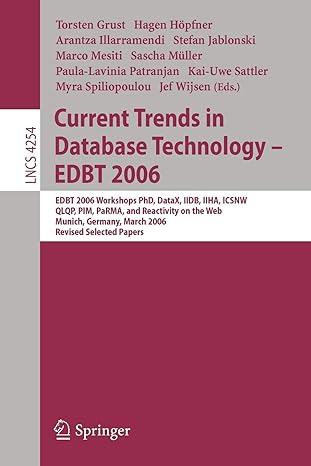Answered step by step
Verified Expert Solution
Question
1 Approved Answer
Suppose we have an array A of n distinct integers, and we want to find both the minimal and the maximal number. In Lecture 7
Suppose we have an array A of n distinct integers, and we want to find both the minimal
and the maximal number. In Lecture we saw how to do this using n
O comparisons,
as opposed to the nave algorithm that uses n comparisons by making two separate
passes to find the minimum and the maximum separately. Here, we will show that this
is actually optimal in the comparison model by proving a lower bound of n
Oand
therefore the complexity of this problem is n
Theta
For the lower bound, suppose there is an arbitrary comparisonbased algorithm that finds
the minimum and maximum of A Suppose we run this algorithm on some input and consider
the situation after some step of the algorithm. Let us say that the element of the array has
lost comparison if it was compared with some other element and turned out to be smaller.
Let us say that the element has won comparison if it was compared to another element and
it turned out to be larger.
Step by Step Solution
There are 3 Steps involved in it
Step: 1

Get Instant Access to Expert-Tailored Solutions
See step-by-step solutions with expert insights and AI powered tools for academic success
Step: 2

Step: 3

Ace Your Homework with AI
Get the answers you need in no time with our AI-driven, step-by-step assistance
Get Started


